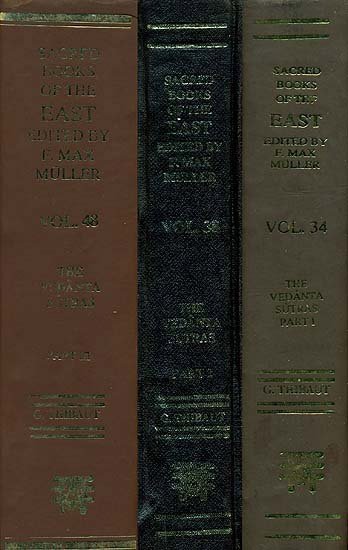Brahma Sutras (Ramanuja)
by George Thibaut | 1904 | 275,953 words | ISBN-10: 8120801350 | ISBN-13: 9788120801356
The English translation of the Brahma Sutras (also, Vedanta Sutras) with commentary by Ramanuja (known as the Sri Bhasya). The Brahmasutra expounds the essential philosophy of the Upanishads which, primarily revolving around the knowledge of Brahman and Atman, represents the foundation of Vedanta. Ramanjua’s interpretation of these sutras from a V...
Sutra 1.3.19
19. And the reference has a different meaning.
The text in question declares that the released individual soul when reaching the highest light, i.e. Brahman, which is free from all sin, and so on, attains its true nature, which is characterised by similar freedom from sin, and so on. Now this reference to the individual soul, as described in the teaching of Prajāpati, has the purpose of giving instruction (not about the qualities of the individual soul, but) about the nature of that which is the cause of the qualities of the individual soul, i.e. the qualities specially belonging to the supreme Person. The reason why, in the section containing the teaching of Prajāpati, information is given as to the true nature of the released individual soul is that such knowledge assists the doctrine referring to the small ether. For the individual Self which wishes to reach Brahman must know his own true nature also, so as to realise that he, as being himself endowed with auspicious qualities, will finally arrive at an intuition of the highest Brahman, which is a mass of auspicious qualities raised to the highest degree of excellence. The cognition of the soul’s own true nature is itself comprised in the result of the meditation on Brahman, and the results which are proclaimed in the teaching of Prajāpati ('He obtains all worlds and all wishes'; 'He moves about there laughing,' etc.) thus really are results of the knowledge of the small ether.
